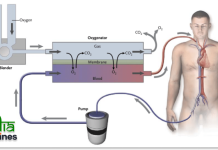
Heart disease encompasses a variety of conditions affecting the heart and its function. These conditions can have serious consequences for health and quality of life, but understanding them is the first step towards prevention and effective management. This blog will explore the different types of heart diseases, their causes, symptoms, and the modern treatments available to combat them.
1. Coronary Artery Disease (CAD)
Overview: Coronary artery disease, also known as ischemic heart disease, is the most common type of heart disease. It occurs when the coronary arteries, which supply blood to the heart muscle, become narrowed or blocked due to the buildup of atherosclerotic plaques.
Causes:
- Atherosclerosis: The primary cause of CAD is atherosclerosis, a condition characterized by the accumulation of cholesterol, fatty deposits, and other substances on the inner walls of arteries.
- Risk Factors: High blood pressure, high cholesterol, smoking, diabetes, obesity, physical inactivity, and a family history of heart disease are major risk factors.
Symptoms:
- Angina: Chest pain or discomfort, often described as pressure, squeezing, or fullness, typically triggered by physical exertion or stress.
- Shortness of Breath: Due to the heart’s reduced ability to pump blood efficiently.
- Heart Attack: Severe chest pain, shortness of breath, sweating, and nausea, indicating a complete blockage of a coronary artery.
Treatments:
- Lifestyle Changes: Diet, exercise, and smoking cessation are crucial for managing CAD.
- Medications: Statins, antiplatelet agents, beta-blockers, and ACE inhibitors help control symptoms and reduce the risk of heart attacks.
- Procedures: Angioplasty and stenting, coronary artery bypass grafting (CABG), and other surgical interventions.
2. Heart Failure
Overview: Heart failure, or congestive heart failure, occurs when the heart is unable to pump blood efficiently, leading to the buildup of fluid in the lungs, legs, and other tissues.
Causes:
- CAD: A leading cause of heart failure due to reduced blood flow to the heart muscle.
- High Blood Pressure: Chronic hypertension forces the heart to work harder, leading to thickening and stiffening of the heart muscle.
- Cardiomyopathy: Diseases of the heart muscle, including dilated, hypertrophic, and restrictive cardiomyopathy.
Symptoms:
- Shortness of Breath: Especially during physical activity or when lying down.
- Fatigue: Persistent tiredness and weakness.
- Swelling: Edema in the legs, ankles, and feet due to fluid retention.
Treatments:
- Medications: Diuretics, beta-blockers, ACE inhibitors, and ARBs to manage symptoms and improve heart function.
- Lifestyle Modifications: Low-sodium diet, regular exercise, and weight management.
- Devices: Implantable cardioverter-defibrillators (ICDs), cardiac resynchronization therapy (CRT), and left ventricular assist devices (LVADs) for severe cases.
- Advanced Therapies: Heart transplantation for end-stage heart failure.
3. Arrhythmias
Overview: Arrhythmias are irregular heartbeats that can be too fast (tachycardia), too slow (bradycardia), or erratic (fibrillation). They can disrupt the heart’s ability to pump blood effectively.
Causes:
- Heart Disease: CAD, heart failure, and cardiomyopathy can lead to arrhythmias.
- Electrolyte Imbalances: Abnormal levels of electrolytes like potassium and magnesium.
- Other Factors: Stress, caffeine, alcohol, and certain medications.
Symptoms:
- Palpitations: Feeling of skipped beats, fluttering, or pounding in the chest.
- Dizziness or Lightheadedness: Due to reduced blood flow to the brain.
- Shortness of Breath and Fatigue: Resulting from inefficient heart function.
Treatments:
- Medications: Antiarrhythmic drugs, beta-blockers, and calcium channel blockers to control heart rate and rhythm.
- Procedures: Catheter ablation to destroy abnormal tissue causing the arrhythmia.
- Devices: Pacemakers for bradycardia and ICDs for life-threatening arrhythmias.
- Lifestyle Changes: Avoiding triggers such as caffeine and managing stress.
4. Valvular Heart Disease
Overview: Valvular heart disease involves damage to one or more of the heart’s valves, affecting blood flow through the heart. Common conditions include aortic stenosis, mitral regurgitation, and mitral valve prolapse.
Causes:
- Congenital Defects: Present at birth.
- Infections: Rheumatic fever and infective endocarditis.
- Degenerative Changes: Age-related wear and tear.
Symptoms:
- Shortness of Breath: Especially during physical activity or when lying down.
- Fatigue and Weakness: Due to reduced cardiac output.
- Swelling and Edema: In the legs, ankles, and abdomen.
Treatments:
- Medications: Diuretics, beta-blockers, and anticoagulants to manage symptoms and prevent complications.
- Surgical Interventions: Valve repair or replacement via open-heart surgery or minimally invasive techniques like transcatheter aortic valve replacement (TAVR).
5. Cardiomyopathy
Overview: Cardiomyopathy refers to diseases of the heart muscle that impair the heart’s ability to pump blood effectively. Types include dilated cardiomyopathy, hypertrophic cardiomyopathy, and restrictive cardiomyopathy.
Causes:
- Genetic Factors: Inherited mutations.
- Infections: Viral infections can damage the heart muscle.
- Toxins: Alcohol, drugs, and certain medications.
Symptoms:
- Shortness of Breath and Fatigue: Due to reduced cardiac output.
- Swelling and Edema: In the legs, ankles, and abdomen.
- Palpitations and Dizziness: Caused by arrhythmias.
Treatments:
- Medications: Beta-blockers, ACE inhibitors, and diuretics to manage symptoms and improve heart function.
- Lifestyle Changes: Diet, exercise, and avoiding alcohol.
- Devices: ICDs and CRT devices to manage arrhythmias and improve heart function.
- Advanced Therapies: Heart transplantation for severe cases.
6. Congenital Heart Disease
Overview: Congenital heart disease (CHD) encompasses a range of structural heart defects present at birth. These defects can affect the heart’s walls, valves, or blood vessels.
Causes:
- Genetic Factors: Inherited mutations and chromosomal abnormalities.
- Environmental Factors: Maternal infections, drug or alcohol use during pregnancy.
Symptoms:
- Cyanosis: Blue tint to the skin due to low oxygen levels.
- Shortness of Breath and Fatigue: Especially during feeding or physical activity in infants and children.
- Poor Growth and Development: Due to inadequate blood flow and oxygen delivery.
Treatments:
- Medications: To manage symptoms and prevent complications.
- Interventional Procedures: Catheter-based techniques to repair or close defects.
- Surgical Interventions: Open-heart surgery to correct structural abnormalities.
- Lifelong Monitoring: Regular check-ups and imaging studies to monitor heart function.
7. Peripheral Artery Disease (PAD)
Overview: Peripheral artery disease is a condition characterized by narrowed arteries in the limbs, particularly the legs, reducing blood flow and causing pain, cramping, and, in severe cases, tissue damage.
Causes:
- Atherosclerosis: Similar to CAD, atherosclerosis is the primary cause.
- Risk Factors: Smoking, diabetes, high blood pressure, and high cholesterol.
Symptoms:
- Intermittent Claudication: Pain and cramping in the legs during physical activity, relieved by rest.
- Numbness or Weakness: In the legs.
- Non-Healing Wounds: Sores on the legs or feet that do not heal.
Treatments:
- Medications: Antiplatelet agents, statins, and medications to improve blood flow.
- Lifestyle Changes: Smoking cessation, regular exercise, and a healthy diet.
- Procedures: Angioplasty and stenting to open blocked arteries.
- Surgical Interventions: Bypass surgery to create a new pathway for blood flow around the blocked artery.
India Time Lines
Conclusion
Understanding the different types of heart diseases is essential for recognizing the symptoms, seeking timely medical intervention, and adhering to effective treatment plans. Advances in medical technology and treatment methods have significantly improved the prognosis for many heart conditions, offering hope and improved quality of life for millions of patients worldwide. By staying informed about heart health and adopting a heart-healthy lifestyle, individuals can reduce their risk of heart disease and promote overall well-being.
In summary, heart disease encompasses a broad spectrum of conditions, each with its unique causes, symptoms, and treatments. From coronary artery disease and heart failure to congenital heart defects and peripheral artery disease, the field of cardiology continues to evolve, providing new insights and innovative solutions to combat these life-threatening conditions.



































